|
Union Wharf
Union Wharf was at the end of Union Mill Street,
between Union Mill and the Cheese and Butter Warehouse. Numbers 16a and 16b Union Mill Street
were formerly wharf manager’s houses, along with a
third building that was demolished after the Union Mill fire
in 1989.
Several businesses used the wharf, which must
once have been a busy place. General carriers
Crowley, Hicklin, Batty & Company were based at the
wharf in 1842. The are listed in Pigot and Company's
Staffordshire Directory. In White's 1851
Staffordshire Directory they are listed as Crowley,
Hicklin, & Company, Union Wharf. Vessels to all
parts, and agents to Chaplin and Horne, railway
carriers.
In the 1840s the company operated a number of fly
boats to many destinations. Working to a strict
timetable, they transported important and perishable
goods, and were usually operated by four men who
changed horses on the move.
The boats operated very day except Sunday. Some
of the boats also operated from Commercial Wharf. It
was a large scale operation as can be seen from the
following list of daily destinations:
Leicester, Burton upon
Trent, Liverpool, Manchester, Preston Brook,
Staffordshire Potteries, Shardlow, Gainsborough,
Derby, Hull, Shrewsbury, Wellington, Newport, Market
Drayton, Ellesmere, Worcester, Gloucester, Bristol,
Tewksbury, Stourport, Kidderminster, London,
Birmingham, Leamington, Warwick, Market Harborough,
Banbury, Oxford, Northampton, Coventry, Atherstone,
and Nuneaton.
The company also operated fly boats at night to
the following destinations:
The potteries, Newcastle,
Congleton, Macclesfield, and Leek.
Robert Lawson junior, a coal merchant, also used
the wharf, as did John Smith, cart and wagon dray
builder, who occupied the Patent Wheel Works in
Union Mill Street. |
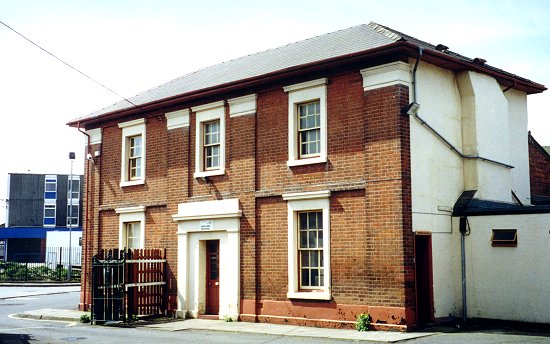
Number 16a Union Mill Street, one of the
wharf manager's houses.
|
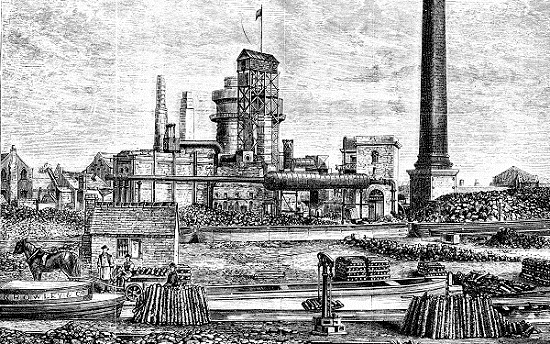
This picture of part of the Darlaston
Steel and Iron Company's factory is from Samuel Griffiths Guide to the Iron Trade, published in 1873. One of
Crowley's boats can be seen on the left. |
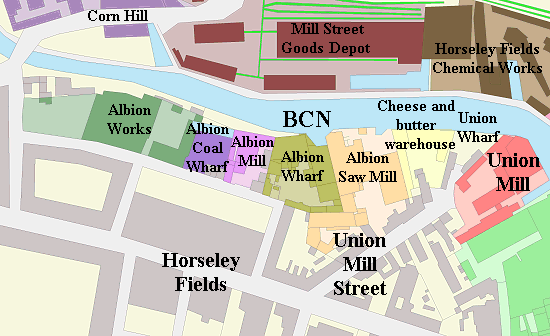
The location of the businesses included in
this section.
In 1897 Mill Wharf at the end of Union Mill Street
was used by Goddard and Company, coal merchants:
| From the Illustrated Towns of
England Business Review of Wolverhampton, 1897.
Goddard and Company, Coal Merchants,
Mill Wharf, Union Mill Street, Horsley Fields. Telephone
7245.
About thirteen months ago Messrs.
Goddard and Company took over the coa1 business at Mill
Wharf, Union Mill Street, which for many years previous had
been conducted by Messrs. H. Lawson and Son. There is no
doubt that this is one of the best known businesses of its
character in Wolverhampton, and at the present time it is
being conducted on the most enterprising lines.
Messrs.
Goddard have splendid wharf accommodation on the side of the
canal, and are thus enabled to keep a large stock of coals
on hand, and meet all demands most promptly. They have a
capital connection among manufacturers and private families;
supplying the best Cannock Chase and Brownhills coals,
cobbles, kibbles, etc., also, rough slack, breezes, coke, etc. For any quantity Messrs. Goddard
offer the very best advantages in respect to price, and the
result of their uniform prompt, courteous and honourable
methods of trading is plainly apparent in a steadily
increasing and desirable connection.
|
|
|
| Cheese and Butter
Warehouse The Cheese and
Butter Warehouse is an early 19th century
building with three storeys and 8 bays. There are
three loading doors, the bottom one of which, opens
directly onto the water level of the canal. On the
southern side is a small courtyard entered through a
pair of decorative gates and bounded on the east by
a narrow 3 storey building.
In 1845 it was occupied by
James & William Barrow, corn and butter merchants,
cheese factors and tallow chandlers. They are also
listed in White’s Staffordshire Directory of
1851. By the end of the 19th century the whole site
was owned by A. E. Beresford, a merchant grocer. The
main building was then used as a warehouse, with
stables on the left, and a lard refinery on the
right. The site also contained an office building,
and workers houses. |

The Cheese and Butter Warehouse in 2003.
On the right is Albion Mill and Hill's Foundry.
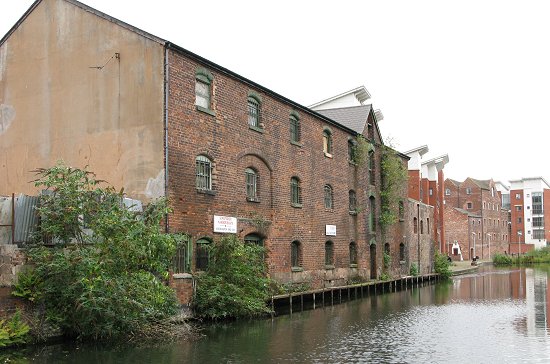
The same scene today, with modern high-rise housing in the background.

The southern side of the building.
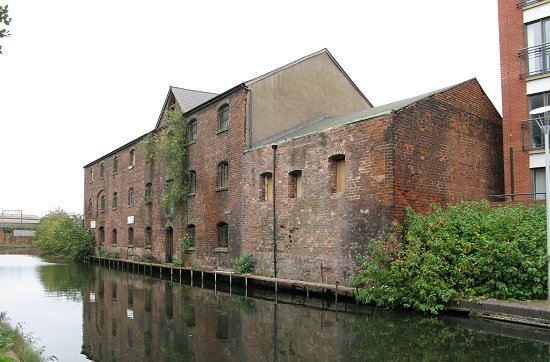
A final view of the Cheese and Butter
Warehouse.
|
Albion Saw Mill and
Timber Yard The
steam-powered saw mill was operated by William
Beddows & Company Limited, Union Mill Street, established
in 1864. The firm of timber merchants specialised in
sawing, planing and mouldings. The company was still
operating in 1964 when they were listed in Kelly's Wolverhampton Directory. Also on the
site, in the middle of the 19th century were W. & E. Walford, timber merchants.

From the 1964 Kelly's
Directory of Wolverhampton.
Albion Wharf

The wharf buildings from the
south. As shown in the 1838 advert below.
Shipton and Company
Joseph Shipton
started the business in Charlotte Street, Birmingham.
It was later taken over by his cousins James and
Maurice.
James formed a partnership with Henry Pratt,
a miller, to carry goods at Albion Wharf,
Wolverhampton. As a result Henry
Pratt established a warehouse there in 1829. The
wharf lay beside the long basin that extended from
the canal, and went under the Albion flour mill. The
basin was built around
1827.
Pratt’s partnership with Shipton was dissolved, and
Pratt became bankrupt. Maurice and James Shipton
went their separate ways, James trading as a timber
merchant, and as Shipton & Company, canal carriers at Albion
Wharf. In 1833 the Shipton Warehouse was built at
Gloucester Docks. It still survives and carries the
name of a later occupant, the Severn & Canal Carrying
Company.
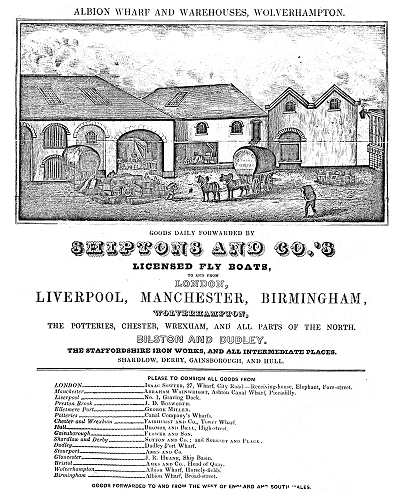
An advert from 1838.
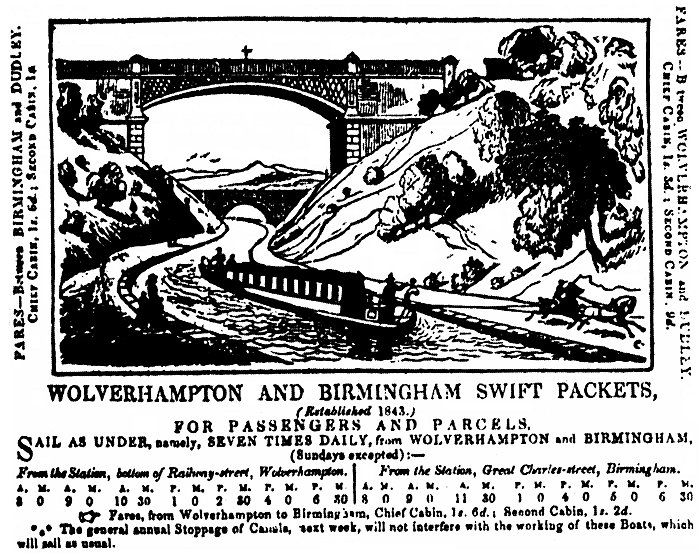
From the Wolverhampton
Chronicle, 3rd June, 1846.
|
The company's fly boats
travelled to a large number of destinations daily,
except on Sunday. The destinations included:
Liverpool, Manchester, Preston Brook, Chester,
Wrexham, North Wales, Shardlow, Gainsborough, Derby,
Hull, the Staffordshire iron works, Bilston,
Dudley, Worcester, Gloucester, Bristol, Tewksbury,
London, and Birmingham., Stourport, and
Kidderminster.
In 1847 Shipton's carrying
business was taken over by the North Staffordshire
Railway. The venture was not a success, and so the
railway company sold it to the Bridgewater Trustees
in 1849, with James Shipton as their agent. James
became mayor of Wolverhampton in November 1854, and
when his term of office ended a year later, he went
into semi-retirement and soon left the town.
He declined to stand for
another year as mayor because his year in office had
been difficult, due to arguments about the council's
failed attempt to purchase Wolverhampton Waterworks.
The council had been severely criticised by many
people, and a number of meetings had ended in
disarray.
When his term in office was
over, he decided to leave in good spirit by inviting
the members of the council to a party at his house
in Dunstall Hill.
|

From the
Wolverhampton Chronicle, 2nd August,
1843. |
|
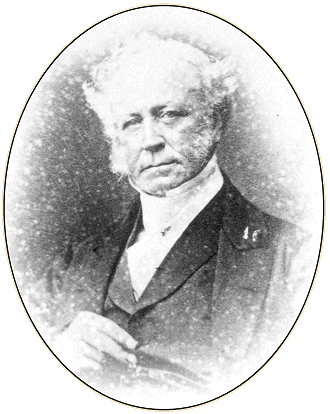
James Shipton
|
The company is listed in the 1842 Pigot & Company's
Staffordshire Directory as Shipton &
Company, and can be found in the 'Carriers'
section. It is also listed in
White's 1851 Staffordshire Directory as
James Shipton, Albion Wharf, and also as
Shipton & Company, Albion Wharf. General carriers
to all parts, agents to the Trustees of the late
Duke of Bridgewater, daily carriers to Birmingham,
Liverpool, Gloucester, Bristol etc.
The 1838 advert lists fly boats to
and from London, Liverpool, Manchester,
and Birmingham.
Shipton also ran packet boats to and
from Birmingham, starting and ending in
Wolverhampton at Broad Street Bridge. |
Albion Wharf was also used by
the largest, and most well known canal
transportation company, Fellows, Morton & Clayton
Limited.
The company was founded in West
Bromwich by James Fellows, who decided to form his
own company, after working as a canal carrier’s
agent. The company started operating in 1837 after
James acquired his first boat called ‘Providence’.
The business rapidly grew, and moved to Tipton in
1841. Sadly James died in 1854, and his wife Eliza
took over the running of the business, until her son
Joshua was old enough to run the business himself.
By the 1860s the fleet had grown to around 50 boats,
after a boat building yard was built at Toll End.
In July 1850 the firm secured
an agency at Wolverhampton from the Bridgewater
Trustees. Frederick Morton, an additional agent, was
appointed there in 1869. On the 1st July 1876,
Joshua Fellows and Frederick Morton came together to
form Fellows, Morton & Company to take over
Bridgewater's trade.
On June 1st, 1889 Claytons
merged with Fellows, Morton & Company to form
Fellows, Morton & Clayton Limited. William Clayton
and his son Thomas were general canal carriers who
specialised in transporting liquid waste from gas
works to distillation and chemical works, mainly
crude tar, and also ammonia-rich water, used in
fertilisers.

Fellows, Morton & Clayton's
'Peacock' at the Black Country Living Museum.

The company's name on the side
of 'Peacock' at the Black Country Living Museum.
The new business flourished,
with a large fleet of boats. Their first steam boat
‘Pheonix’ was built in 1884. It was more powerful
and much faster than a horse-drawn boat. In 1911 the
company built its first boat powered by a Bolinder
engine. This was a great success and more quickly
followed. The company had hundreds of boats
including a large number of butties.
Fellows, Morton & Clayton also
operated from Broad Street Warehouse, Wolverhampton.
On January 1st, 1947 carrying
rates were increased, which resulted in the company
making its first ever trading loss. Things went from
bad to worse, and so the company went into voluntary
liquidation in November, 1948. The company's assets
were acquired by the Docks and Inland Waterways
Executive, the new governing body, formed in 1948
under the terms of the 1947 Transport Act which
nationalised the canals. The Docks and Inland
Waterways Executive, later became known as British
Waterways.
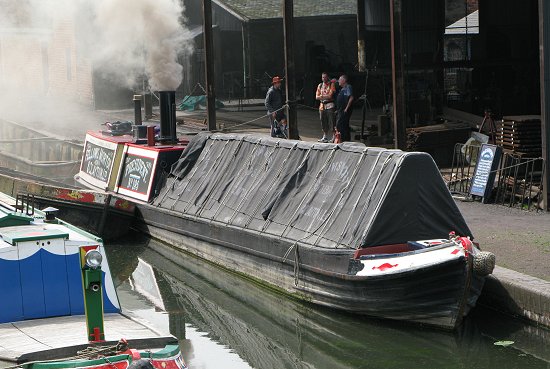
The 'President' at
the Black Country Living Museum.
President was built in 1909 at a cost of
£600 in Fellows, Morton and Clayton's
dock at Saltley, Birmingham. After a major
restoration, the boat was bought by the
Black Country Living Museum in 1983.
|
|
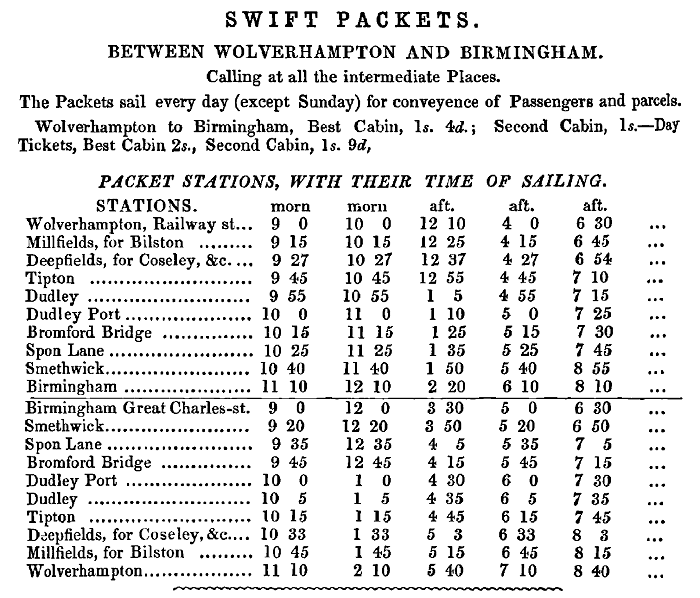
From Melville &
Company's 1851 Wolverhampton Directory. |
Albion Mill
The Albion Mill was built
around 1830 alongside Albion Wharf and its basin. It
is a good example of an
early corn mill, that is integrated into the canal
system. In 1845 it was operated by James Bradshaw &
Sons, millers, corn factors, bakers, grocers,
provision dealers, seedsmen, and tallow chandlers.

An advert from 1861.
|
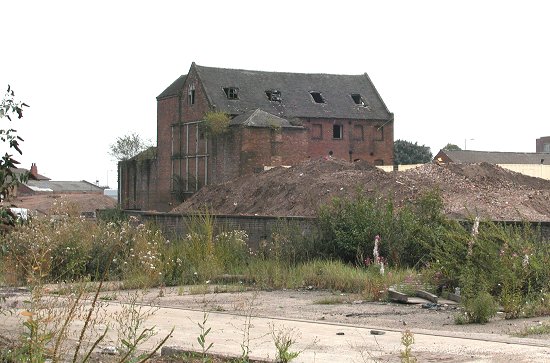
Albion Mill in
2004, surrounded by rubble from the
recently demolished Hill's foundry. |
|
| |

Albion Mill during
restoration. |
|
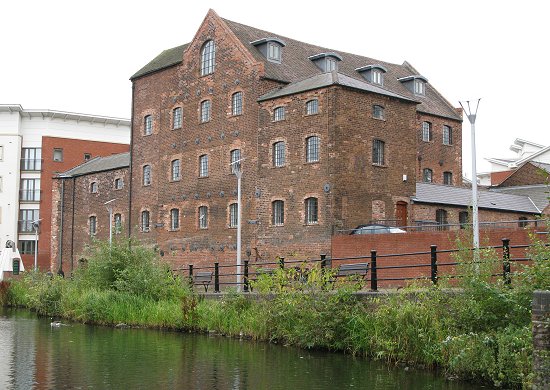
Albion Mill as it
today. |
|
| |
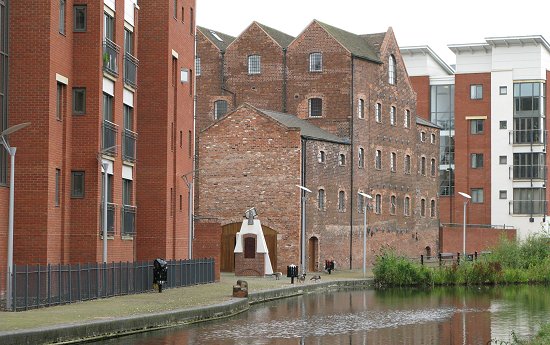
Another view of
the mill. |
|
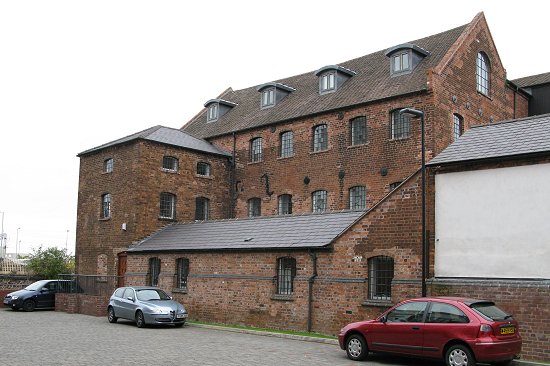
A view of the
western side of Albion Mill.
|
|
Albion Coal Wharf
For many years the wharf was used by the Albion Coal
Company, that was owned by John Hill & Sons.
Albion Works
John Hill & Sons (Ironfounders)
Limited were based at Albion Works. The company was
founded in 1830 and survived until almost the end of
the 20th century. In the latter years of the 19th
century the company was run by two partners, Alfred
and John Hill. In November 1900 their partnership
was dissolved.
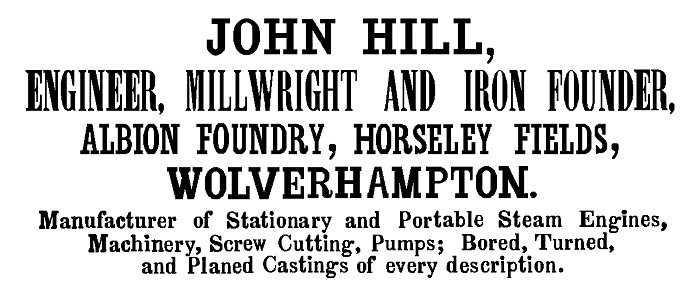
An advert from 1851.
Albion Works was also occupied
by the Associated Steels & Tools Company Limited. It
is listed in Kelly's 1962 Wolverhampton Directory.
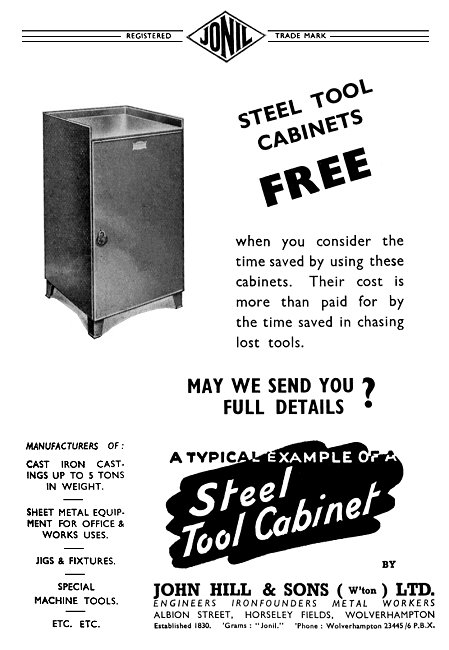
An advert from 1945.
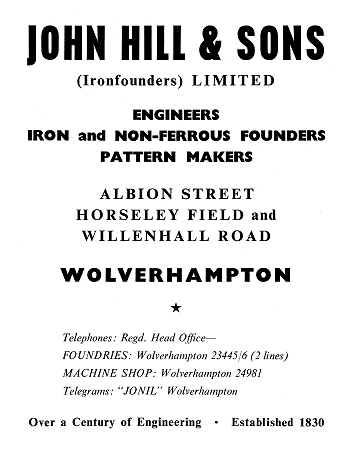
An advert from 1953.
| John Hill & Sons was taken over by
Staveley Industries, of Staveley,
Hollingwood, near Chesterfield. As can
be seen in the advert below. |
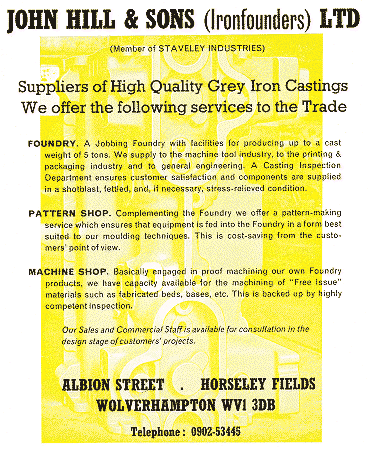
An advert from 1974. |
|
Hill's foundry in 2003. |
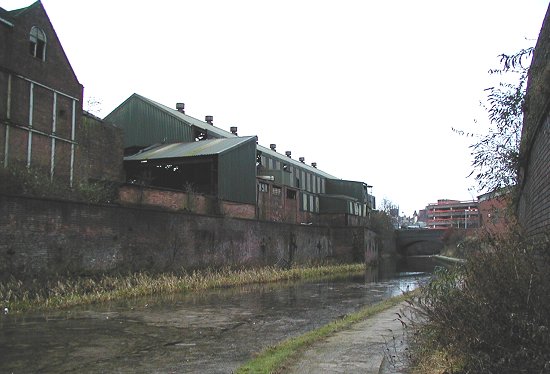 |
|
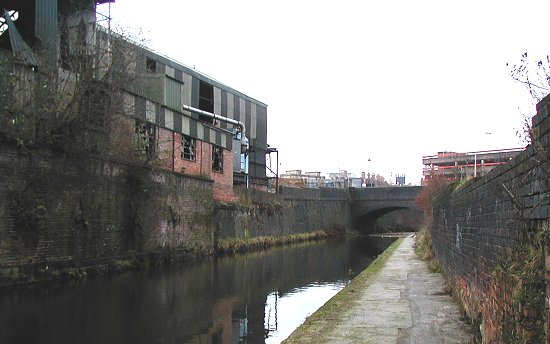 |
Another view of Hill's
foundry, looking towards Corn Hill. |
|
The same view after
demolition. |
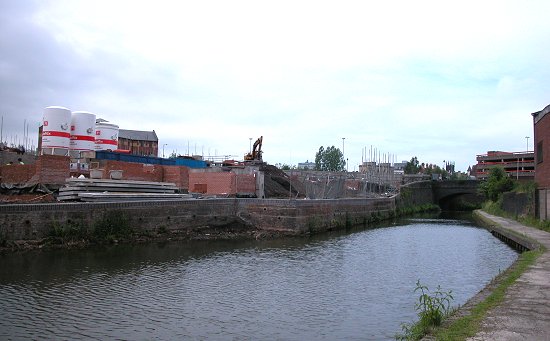 |
|
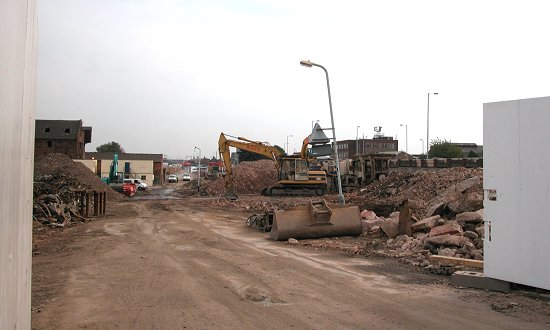 |
Albion Street during
redevelopment. |
 |
Return to the
previous page |
|